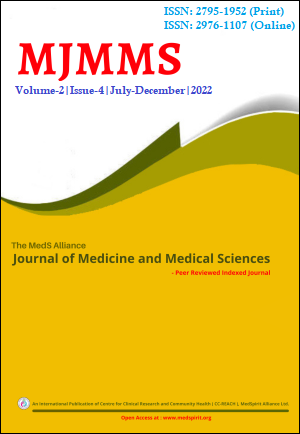Serum Bilirubin and Uric Acid Levels in Pan Masala Tobacco Users as Compared to Non-Users
DOI:
https://doi.org/10.3126/mjmms.v2i4.53529Keywords:
Bilirubin, Oxidative stress, Pan Masala Tobacco, Uric acidAbstract
INTRODUCTION: Pan Masala Tobacco (PMT), consumed in smoke and smokeless form, contains various carcinogenic chemicals and free radicals. Bilirubin and uric acid are said to have both pro- and anti-oxidant activities. In this context, we aimed to compare the serum levels of bilirubin and uric acid between PMT users and non-users. We also wanted to observe the pattern of PMT consumption among the users. MATERIALS AND METHODS: A total of 204 participants were enrolled in this community-based comparative cross-sectional study. The study was conducted in the Ranigaun community, Rupandehi, Nepal, from March 2020 to December 2020 AD for ten months. Serum bilirubin (total, conjugated and unconjugated) and uric acid levels of both PMT users (n = 103) and non-users (n = 101) were measured. MannWhitney U test and Chi-squared analysis were performed. A p-value of < 0.05 was considered statistically significant. RESULTS: The majority of PMT users were male (n= 90; 87.3%). Most of them consumed smokeless forms of PMT (n = 64; 62.1%), with tobacco being the most preferred product (n = 42; 40.8%). The average age of PMT users was significantly higher (44 years) than the non-users (38 years). The serum uric acid and bilirubin levels were not significantly different among the PMT users and non-users. CONCLUSIONS: Male consumed more PMT than females. Smokeless tobacco was the most preferred product in the studied area. Serum bilirubin and uric acid levels did not vary significantly between PMT users and non-users.
Downloads
Downloads
Published
How to Cite
Issue
Section
License

This work is licensed under a Creative Commons Attribution-NonCommercial 4.0 International License.




